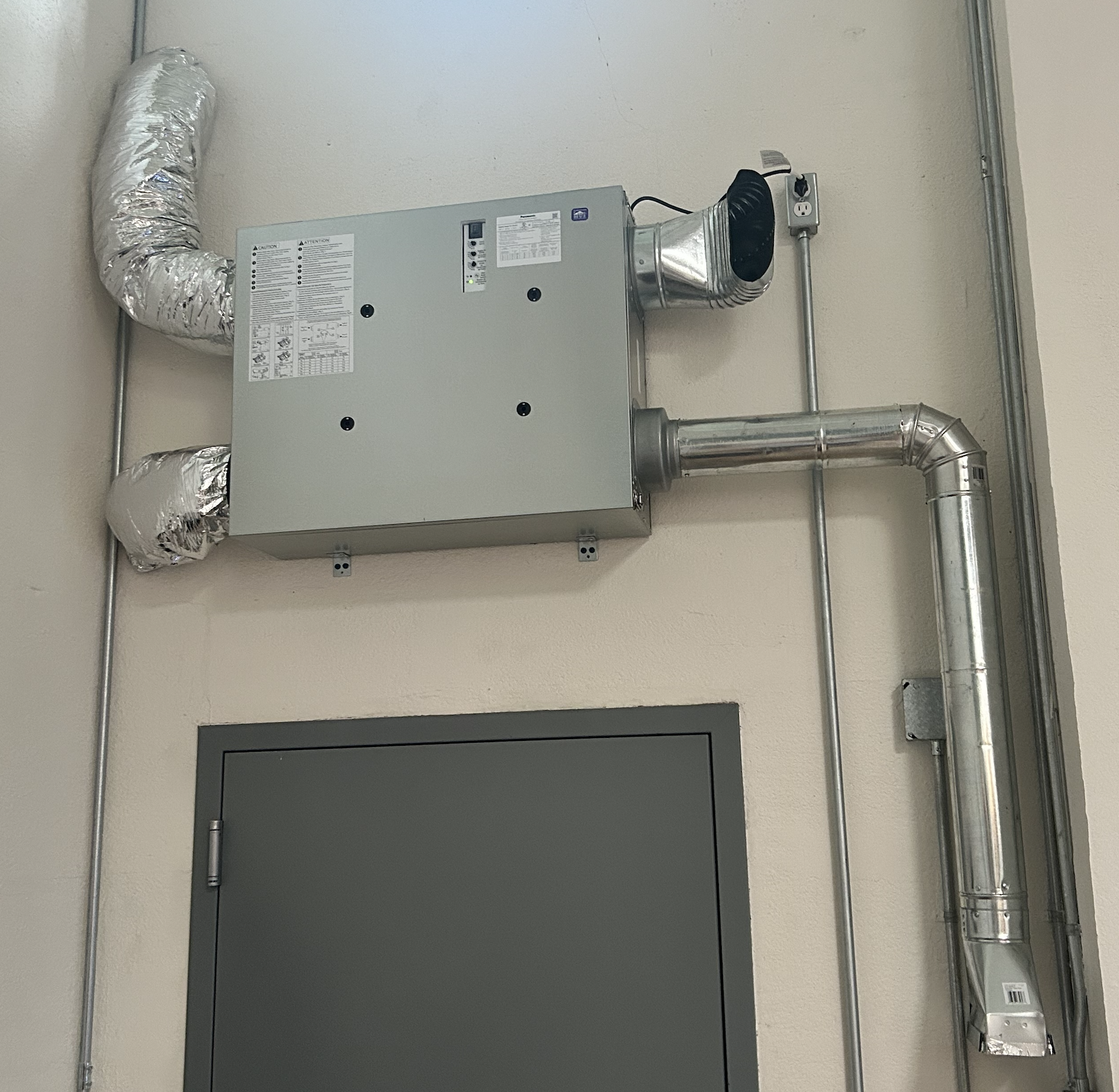
Fresh Air In: The ERV pulls fresh air from outside into your home. Stale Air Out: At the same time, it pushes stale, indoor air out of your home. Heat Exchange: As it does this, the ERV transfers heat from the outgoing air to the incoming air in the winter (and does the opposite in the summer) to save energy.
Positive Pressure: This means that the ERV makes sure there's a bit more air coming into the house than going out. Think of it like slightly blowing up a balloon. When there's more air pressure inside the house, it makes it harder for outside air (or radon) to sneak in through cracks and gaps.
Blocking Radon: Since radon comes from the ground, it tries to seep into the basement through tiny cracks. But when the ERV creates positive pressure, the air pressure inside your house is higher than the pressure outside. This higher pressure pushes air out through those cracks, instead of letting radon in.
Imagine your house is a balloon. If the balloon is slightly inflated (positive pressure), air wants to escape from any small hole, rather than air (or radon) sneaking in.
